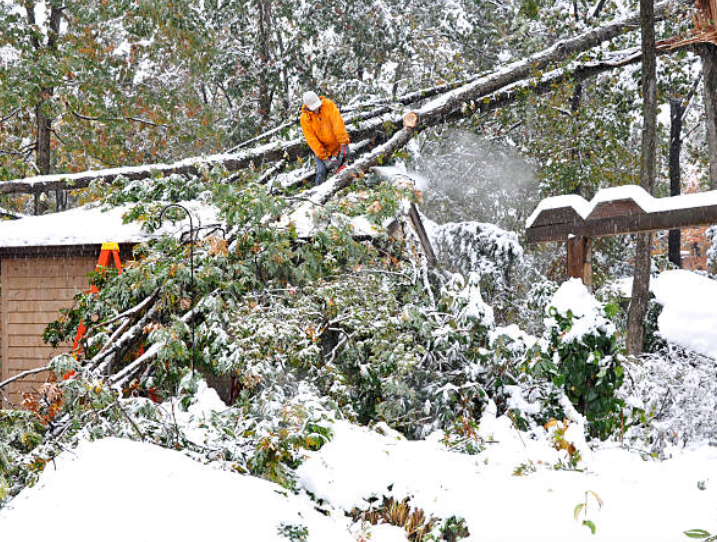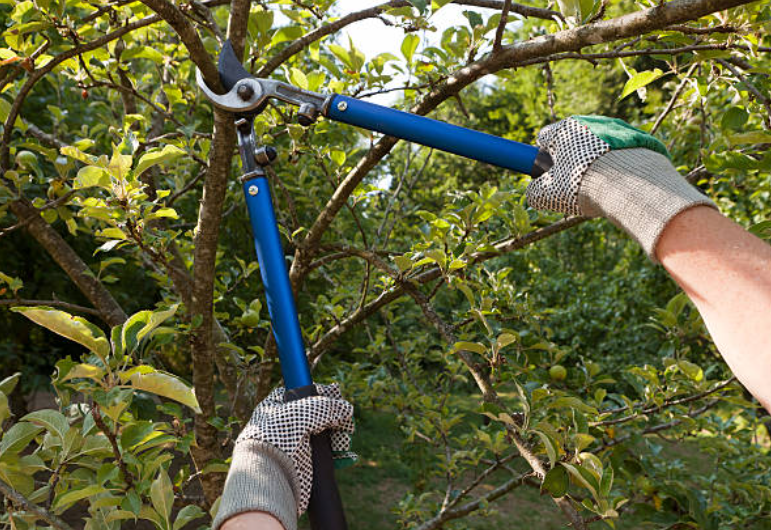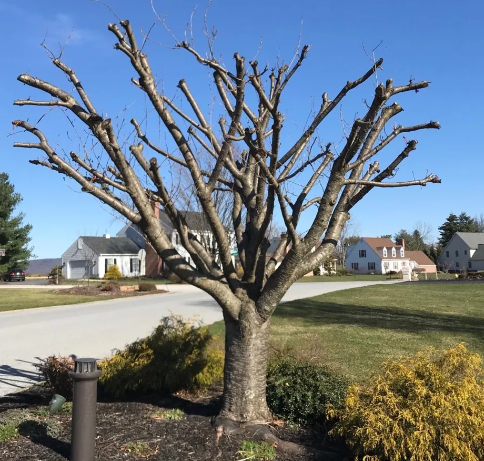Ways to Winterize your Texas Trees
Winter in Texas brings about dramatic environmental shifts that impact Texas trees. Temperatures drop and weather patterns change, creating new challenges to this vibrant foliage that characterizes Texas landscapes. Here are several steps you can take to winterize them for optimal performance in Texas landscapes this winter.
Understanding the significance of winter care for trees in Texas is vital for homeowners who take pride in maintaining the health and aesthetics of their properties. Winter is a period when their resilience and wellbeing are tested against seasonal elements, necessitating special attention from owners in order to preserve vitality of these assets.
Within this article, we'll examine the practical considerations associated with winterizing trees in Texas. By exploring various methods and strategies that have proven effective, our aim is to equip homeowners with all of the knowledge required to support and protect their trees effectively. Join us as we discover essential practices designed to preserve the health and beauty of Texas trees during winter's challenges, extending their longevity and strength against winter's challenges.
Understanding Texas Winter Challenges for Trees
Although Texas has relatively mild winter temperatures compared to many northern states, its trees still face significant challenges throughout wintertime. Due to its varied climate zones and temperatures, from mild temperatures in southern regions to occasional frost in its northern parts, trees must adapt their environment as much as possible for survival in Texas winter conditions.
Common winter threats to Texas trees include sudden temperature drops, frosts and freezing rain. All three elements can lead to frost cracks, where rapid temperature fluctuations cause tree bark to split under pressure, which affect tree bark significantly and require repairs. Frost can damage tree tissues and can result in bark injuries or even tree death in extreme cases.
Winter winds pose another significant dehydration challenge to trees, with their combination of low moisture levels and strong gusts contributing to water loss through tree leaves and stems, especially evergreen trees, which may become susceptible to desiccation during these gusty spells.
Ice storms in Texas often bring heavy winds with them, potentially breaking branches off trees and posing a significant threat not only to their health but also the nearby structures. Ice storms pose both health risks to trees themselves and also threaten structures near by.
Understanding these challenges is the first step toward successfully protecting Texas trees during winter. By being aware of any threats to their trees posed by winter weather conditions, homeowners can take proactive measures to lower risks and ensure the survival of their cherished trees.

Winterizing Your Texas Trees
Prior to the cold setting in, it's crucial that your trees receive a thorough examination and health evaluation. Inspect for signs of disease, pest infestation or weak branches which might not withstand winter's chill; prune away damaged or diseased branches where necessary.
Tree pruning not only promotes tree health, but can also mitigate potential hazards during winter storms.
Protecting Tree Roots and Trunks From Winter Damage
Mulching can act as an insulating layer around tree bases, helping regulate soil temperature and moisture levels. Spread a layer of organic mulch like wood chips or shredded bark at their base ensuring it doesn't touch the trunk directly. This practice will protect roots from extreme temperature changes while conserving moisture levels in the soil. It is also a good idea to wrap the trunks of young or sensitive trees with commercial tree wraps or burlap to protect against sunscald, a condition where the bark heats up on sunny days and freezes rapidly at night, causing damage.
Selecting Appropriate Mulching and Insulation Techniques for Texas Trees
When choosing mulch that best matches Texas' climate, organic materials offer both protection for roots while simultaneously decomposing into richer soil over time. Lay 2-4 inches thick layer from base of tree up the trunk as an insulation blanket around its drip line for best results. For added insulation, use a burlap or frost cloth to creative a protective barrier around vulnerable tree. These materials shield against harsh winds and frost while allowing air circulation.
Pruning Tips for Winter Tree Care in Texas
Pruning in winter dormancy helps shape trees and remove potential hazards, like dead or weak branches that cross or rub against each other, dead spots, or those crossing or touching each other. Proper tree trimming promotes healthy growth once the spring growing season rolls around. If you are unsure of the proper way to trim or which limbs need to be removed, contact your local tree service professionals.
Implementing these practices helps Texas tree owners fortify their trees against winter's challenges and lowers the risk of winter damage, protecting both tree health and property aesthetics.
Why Winter Care Can Benefit Both Trees and Your Home
Engaging in winterization efforts for Texas trees reaps many advantages. Improved winter survival rates, better spring growth rates and overall tree health improvements are direct outcomes of proactive winterization efforts; by protecting trees against winter stressors homeowners make an invaluable contribution to their long-term wellbeing.
How Well-Cared Trees Can Add Value
Properly maintained trees add beauty and value to a property year round, but particularly during winter. Even as leaves drop and landscapes appear barren, well-kept trees remain as majestic sculptures providing texture and visual interest against a stark winter backdrop, creating beautiful views against the sky while potentially increasing property values. The effort put into winter care isn't merely about preserving the external appearance of trees, but also an investment in the environment, a commitment to sustainability, and a testament to the homeowner's dedication to their property.
Emotional Satisfaction
In addition to tangible advantages, caring for trees in winter also fosters an intimate connection to nature and can foster an increased appreciation for its power and beauty. Caring for them as part of one's stewardship duties creates emotional satisfaction from watching trees thrive due to your efforts. You may even witness new ones pop up thanks to your work! Caretaking brings both an immense sense of fulfillment and deepened appreciation of nature's treasures. Winter tree care goes beyond just looking pretty; it's also an investment in our environment, an act of sustainability and a demonstration of homeowner pride in their property.
Encourage Community Participation in Winter Tree Care Efforts
Winter tree care efforts don't just benefit individuals, they offer the chance for community participation. Collaboration among neighbors, environmental groups and municipal initiatives can significantly impact Texas trees. Through community tree planting events, workshops on winter tree care or neighborhood cleanup drives, collective responsibility towards maintaining tree canopy can be fostered.
In addition to immediate visual and property-related benefits, caring for trees during winter has extensive environmental implications. Trees serve as carbon sinks by absorbing and storing carbon dioxide emissions; maintaining healthy trees also improves air quality, wildlife habitats and overall ecosystem balance; particularly important in urban settings where green spaces play such a vital role in maintaining healthier environments.
Understanding the environmental impacts of winter tree care empowers homeowners to take proactive steps toward protecting Texas' natural beauty. Through informed decisions and participation in community initiatives, individuals can contribute towards larger-scale efforts aimed at environmental preservation. Whether through actions taking place within their own yards or joining larger community efforts, each contribution makes an impactful statement about environmental protection.
Summarizing the Importance of Winter Tree Care
Winter
tree care for Texas trees should not just be seen as a seasonal chore; rather it should serve as a testament to our commitment to supporting nature's gifts. As we come to a close of this exploration into winterizing trees in Texas, it has become apparent that taking proactive measures isn't simply about protecting them from cold temperatures; rather it's also about safeguarding their legacy and future. By following the strategies outlined here, homeowners take an active part in maintaining the health and beauty of their trees for years to come. Let this guide not only be a resource, but also as an encouragement for homeowners to cherish and preserve Texas landscapes' natural treasures. With our joint effort and community participation, together we can nurture flourishing tree canopies into sustainable legacies for future generations to enjoy.
You might also like

Book a Service Today
We will get back to you as soon as possible
Please try again later


